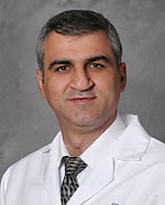OBJECTIVE: To report on the perioperative outcomes after robotically assisted total hysterectomy for benign indications in a large patient population with predominantly complex pathology.
METHODS: One hundred fifty-two patients underwent robotic hysterectomy for noncancer indications from May 2005 to May 2008. A systematic chart review of consecutive robotic cases was conducted based on preoperative and perioperative characteristics of each patient. Each case was evaluated for its complexity based on preoperative diagnosis, prior pelvic or abdominal surgery, patient's body mass index, and uterine weight.
RESULTS: The overall operative time was 122.9 minutes, estimated blood loss was 79.0 mL, and there were three (2.1%) intraoperative complications, with no perioperative blood transfusions or conversions. There were five (3.5%) patients with postoperative complications, and length of hospital stay was 1.0 days on average. Of the characteristics indicating complexity, only uterine weight greater than 250 g resulted in significantly increased operative times, attributable to increased morcellation time.
CONCLUSION: Robotically assisted total hysterectomy for benign indications in patients with complex pathology is feasible, with low morbidity and a short hospital stay. This study suggests that robotic assistance facilitates the use of a minimally invasive approach in high-risk patient populations.
Minimally invasive surgical techniques for performing hysterectomy have been shown to reduce patient morbidity and shorten hospital stay.1,2 Although there have been reports of the successful use of laparoscopic techniques for obese patients3 and patients with large uteri,4-7 surgeons are often limited in the complexity of the procedures that they can perform using conventional laparoscopy.
A robotic system (da Vinci Surgical System, Intuitive Surgical, Inc., Sunnyvale, CA) is designed to address many of the limitations of conventional laparoscopy, and these benefits may allow for a minimally invasive approach in more complex cases, demonstrating the feasibility and safety of this technology as effective without increasing morbidity. However, although there have been several pilot studies on alternatives to laparoscopic hysterectomy for both benign and oncologic indications,8-14 to date there have only been two larger-scale studies of roboticassisted total hysterectomy specifically for benign indications.15,16 In addition, the advantages of robotics may become even more apparent in complex cases, where the use of conventional laparoscopy is traditionally contraindicated. For example, one study reported success in treating six patients for pelvic adhesive disease with robotic-assisted total hysterectomy with good patient outcomes.17
As a gynecologic oncology practice at a teaching institution,18,19 the benign cases that we see are often complex cases. In this study we sought to investigate whether robotic assistance facilitates the surgery and results in low morbidity and acceptable perioperative outcomes.
MATERIALS AND METHODS
. . .Continue to read rest of article (PDF).
Rabbie K. Hanna, MD specializes in Obstetrics and Gynecology. He is certified by the American Board of Obstetrics and Gynecology and the American Board of Obstetrics and Gynecology for Gynecologic Oncology. Licensed to practice in Michigan, Dr. Hanna is a Member of the American Society of Clinical Oncology (ASCO) and the American College of Obstetrics and Gynecology (ACOG), among others. He is currently a Clinical Assistant Professor in Obstetrics and Gynecology at Wayne State University, Detroit, MI.
©Copyright - All Rights Reserved
DO NOT REPRODUCE WITHOUT WRITTEN PERMISSION BY AUTHOR.









